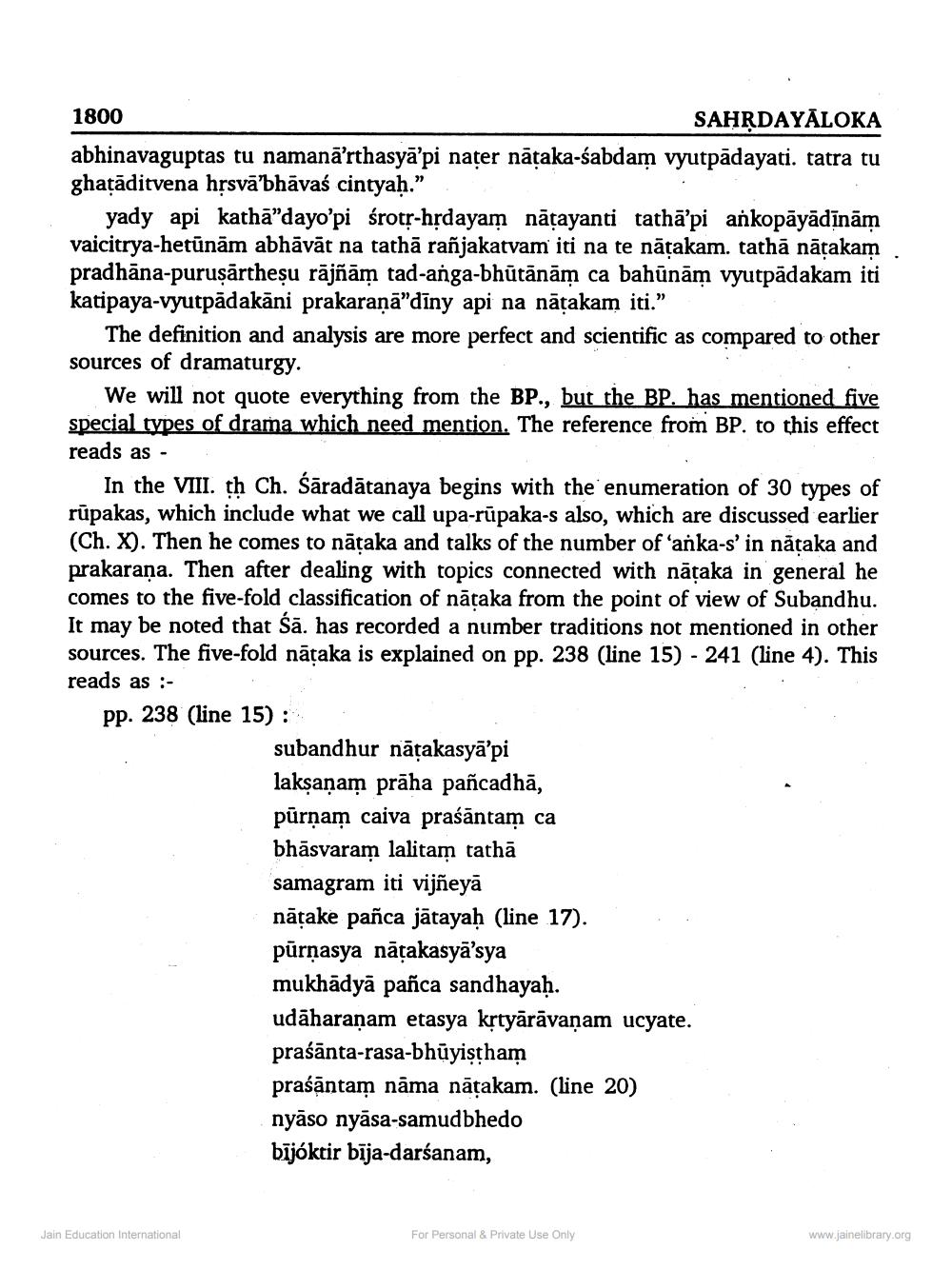________________
1800
SAHĶDAYĀLOKA abhinavaguptas tu namanā’rthasyā’pi națer nāțaka-sabdam vyutpādayati. tatra tu ghatāditvena hļsvā bhāvaś cintyaḥ.”
yady api kathā”dayo'pi śrotr-hțdayam nātayanti tathā’pi ankopāyādīnām vaicitrya-hetūnām abhāvāt na tathā rañjakatvam iti na te nātakam. tathā nātakam pradhāna-puruṣārtheșu rājñām tad-anga-bhūtānām ca bahūnām vyutpādakam iti katipaya-vyutpādakāni prakaraņā"dīny api na nātakam iti.”
The definition and analysis are more perfect and scientific as compared to other sources of dramaturgy.
We will not quote everything from the BP., but the BP. has mentioned five special types of drama which need mention. The reference from BP. to this effect reads as -
In the VIII. th Ch. Śāradātanaya begins with the enumeration of 30 types of rūpakas, which include what we call upa-rūpaka-s also, which are discussed earlier (Ch. X). Then he comes to nāțaka and talks of the number of 'anka-s' in nătaka and prakarana. Then after dealing with topics connected with nāțaka in general he comes to the five-fold classification of nātaka from the point of view of Subandhu. It may be noted that Sā. has recorded a number traditions not mentioned in other sources. The five-fold nātaka is explained on pp. 238 (line 15) - 241 (line 4). This reads as :pp. 238 (line 15) :
subandhur nātakasyā’pi lakṣaṇam prāha pañcadhā, pūrņam caiva praśāntam ca bhāsvaram lalitam tathā samagram iti vijñeyā nāțake pañca jātayaḥ (line 17). pūrņasya nāțakasyā’sya mukhādyā pañca sandhayaḥ. udāharaṇam etasya krtyārāvanam ucyate. praśānta-rasa-bhūyiṣtham praśāntam nāma nāțakam. (line 20) nyāso nyāsa-samudbhedo bījóktir bīja-darśanam,
Jain Education International
For Personal & Private Use Only
www.jainelibrary.org




